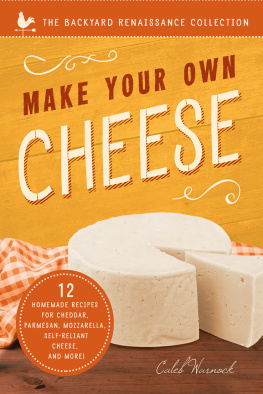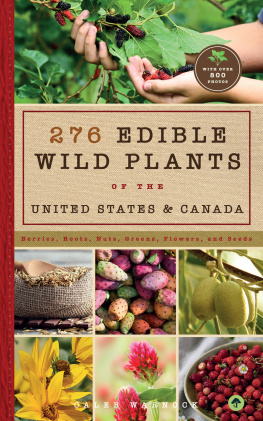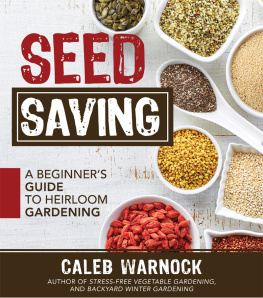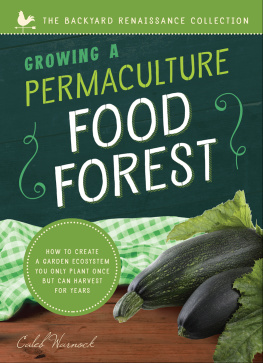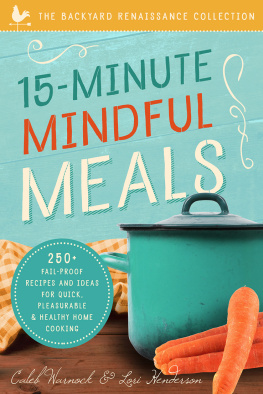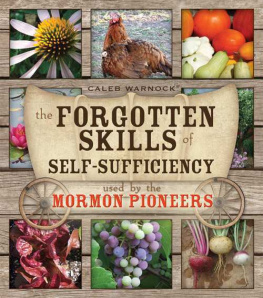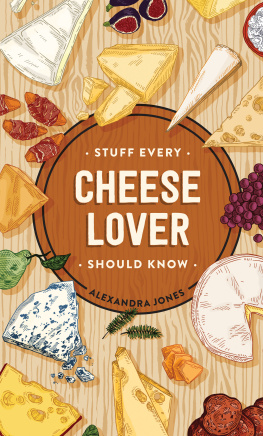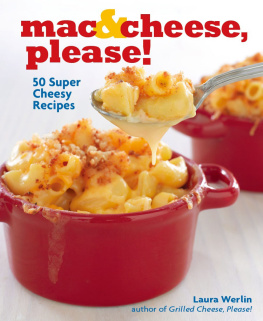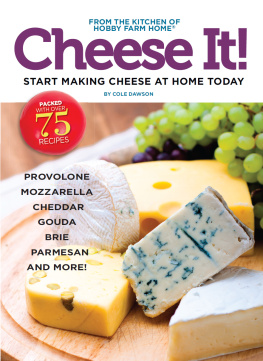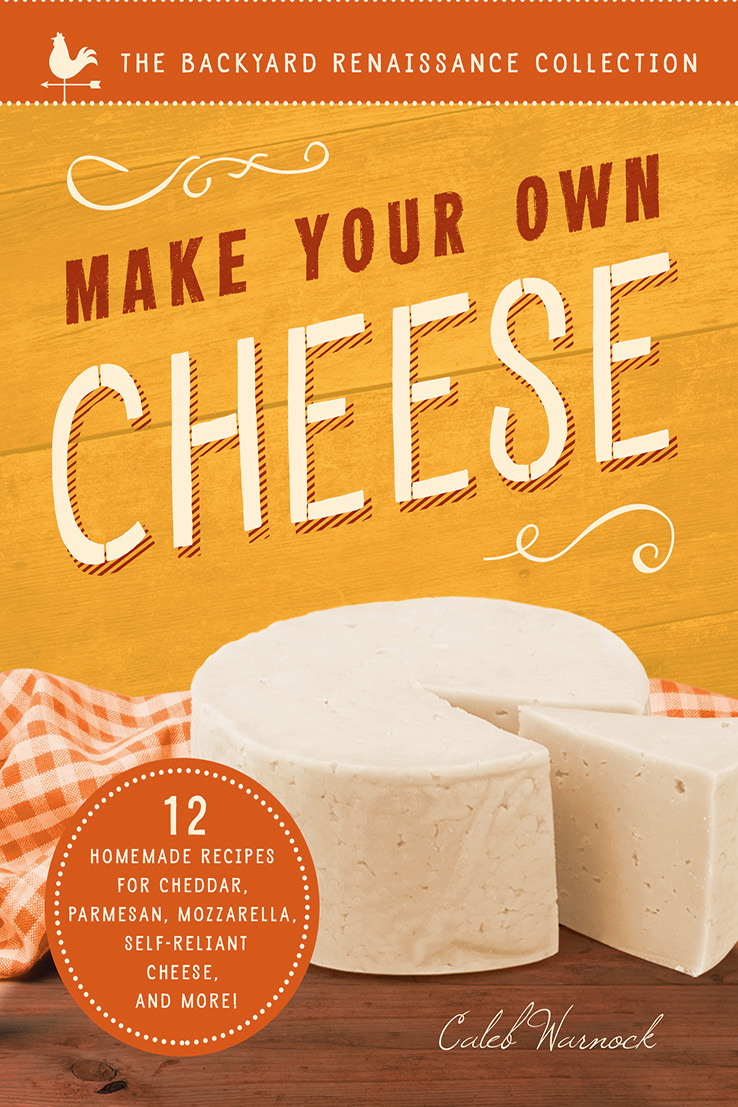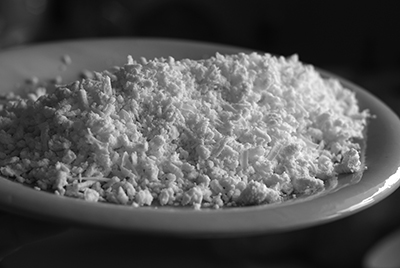
Discover the
Long-Lost Skills of
Self-Reliance
M y name is Caleb Warnock, and Ive been working for years to learn how to return to forgotten skills, the skills of our ancestors. As our world becomes increasingly unstable, self-reliance becomes invaluable. Throughout this series, Backyard Renaissance , I will share with you the lost skills of self-sufficiency and healthy living. Come with me and other do-it-yourself experimenters, and rediscover the joys and success of simple self-reliance.

Copyright 2016 by Caleb Warnock
All rights reserved.
Published by Familius LLC, www.familius.com
Familius books are available at special discounts for bulk purchases, whether for sales promotions or for family or corporate use. For more information, contact
Familius Sales at 559-876-2170 or email .
Reproduction of this book in any manner, in whole or in part, without
written permission of the publisher is prohibited.
Library of Congress Cataloging-in-Publication Data
2016942209
Print ISBN 9781939629746
Ebook ISBN 9781944822156
Printed in the United States of America
Edited by Emily Faison
Cover design by David Miles
Book design by David Miles and Kurt Wahlner
10 9 8 7 6 5 4 3 2 1
Second Edition
WELCOME
W elcome to the delicious art of homemade cheesemaking! This book will teach you to make:
- fresh farm cheese (queso fresco)
- white or orange cheddar cheese
- mild, medium, or sharp cheddar
- Romano-type and Parmesan-type dry cheeses
- mozzarella
- cottage cheese
- cream cheese
- rennet-less soft cheeses
This book will also teach you to use:
- commercial vegetable rennet
- commercial animal rennet
- backyard vegetable rennet
Homemade food is satisfying not only because of its great flavor but because it connects us to our food heritagereal food, made from simple ingredients, with real nutrition.
Cheesemaking has been practiced for thousands of years
because it is easy, healthful, andI hope youll forgive me for saying thismagical. Taking milk and turning it into cheese really does seem like magic. Ive taught many cheesemaking classes, and it is always fun to see the light in the eyes of students who have never seen milk turn to curd. You pour milk into a pan, and a few minutes later, it has changed to a solid curd. And from that curd, many cheeses can be made. When I think of the many different cheeses we take for granted
today, I am grateful to all the people who created those cheeses, whose names are now lost to history. Welcome to the journey of learning to make cheese. Be prepared to fall in love.
Caleb Warnock
GETTING STARTED
Rennet
For most of the history of the world, cheeses were made with only two or three ingredients: milk, acid (kefir or vinegar), and rennet. Milk and acid can be used to make soft cheeses. Adding rennet is necessary to make hard cheeses. Rennet is a group of enzymes (proteins) that occur naturally in some animals, plants, and fungi.
Until recent decades, all rennet for hard cheeses came from the lining of the fourth stomach of a calf, called the abomasum , where the enzyme chymosin is naturally found. This coagulating enzyme allows the calf to digest its mothers milk by turning the milk into cheese curd. (Human babies also naturally turn milk into curd, which every parent has seen in the form of spit-up). Throughout most of history, the calfs fourth stomach was cleaned and dried so that a small piece could be used as needed to coagulate milk into hard cheese. A dried, salt-cured calf abomasum, called a vell , was generally available for sale in the United States even through the 1960s. In recent decades, technology has allowed companies to manufacture genetically modified (GMO) bacteria, which produce this rennet instead.
Today, the natural calf source of rennet is considered too expensive for commercial use. Most commercially sold hard cheeses in the United States, like cheddar, are made with rennet produced from genetically modified bacteria, called Fermentation-Produced Chymosin (FPC), the first-ever genetically modified food product for humans approved by the US Food and Drug Administration. Despite rennet coming from GMO bacteria, US law does not require cheese to be labeled as GMO, even when consumers directly inquire. This is because the bacteria that produce the rennet are genetically altered, not the actual ingredient, rennet, the bacteria produce. This allows manufacturers to legally claim that their cheese includes no GMO ingredients. In my view, this is all a shameful dance of semantics, a deliberate effort to keep consumers from knowing the origin of food.
Despite searching long and hard, I have not been able to find any vells for sale anywhere in the United States. I have not even been able to find a butcher who could sell me an abomasum so I could make my own vell. Sadly, we have given up the natural way of cheesemaking used for thousands of years.
If you, like me, are opposed to genetically modified foods and prefer to use natural ingredients, WalcoRen is the only rennet I have been able to find that guarantees in writing it is 100 percent natural, non GMO, with no microbe manufacturing. These rennet tablets are preservative-free, with no GMO ingredients, containing only salt and natural chymosin (calf rennet powder). You can buy rennet tablets at my website, SeedRenaissance.com .
Using Rennet to Make Cheese
In the first section of this book, you will find recipes for cheese using commercial rennets, like the Seed Renaissance tablets mentioned above. One tablet makes eight cheeses using the 3/4-gallon milk recipe found later in this book. The tablets are broken into one-eighth pieces and refrigerated until needed. Before making cheese, the tablet portion is gently crushed with the back of a spoon and dissolved in 1/4 cup cold water for 10 to 15 minutes or can be left uncrushed and dissolved overnight. Rennet tablets typically have a shelf life of between six months and a year. I recommend that you write the date on the rennet package when you receive it so that you know how long you have had the rennet. For people who make cheese only as a hobby, expired rennet is one of the primary causes of failed cheese batches. Making sure you have dated your rennet prevents this problem.
Vegetarian Rennet
Vegetarian rennet is commercially made from a mold called Mucor miehei . Unfortunately, most experienced cheesemakers say this rennet does not work as well as animal rennet (or FPC) and may add a bitter flavor to aged cheeses. Most vegetarian rennets are also made today from GMO bacteria because it is cheaper than extracting rennet enzymes from the mold.
There are also some plants that can produce either rennet enzymes or acid strong enough to coagulate milk, allowing the milk to separate into curds and whey. In the second section of this book are recipes using all-natural, self-reliant backyard rennets.

